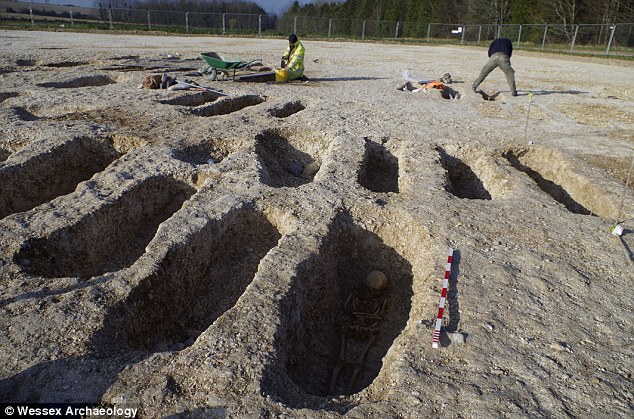The mysterious land hosting the peculiar Stonehenge has long been the centre of search for inquisitive minds. The Salisbury’s Chalk plateau is again under the scope for more mystifying phenomena lying hidden under its soil.
A group of archaeologists have stumbled upon an Anglo Saxon burial site containing some 150 graves. The astonishing thing about the graves is the discovery of grave goods found alongside the remains of the dead people. The graveyard in the peaceful countryside of Belford, Wiltshire revealed bodies buried with Sewing box, Jewellery, a well crafted comb and some beautiful shells.
Researchers believe that the site must have been a place of spiritual significance for 5,000 years, and has the indications that Stone Age man had close connection with the graveyard. Discovered by archaeologists from Wessex Archaeology some four miles from the Stonehenge, the side contained more than 150 graves, some of them dating back to 660 AD.

One grave caught the attention of the researchers which contained the remains of a young woman in her early 20’s, put in her grave with a cowrie shell and two cylindrical boxes.
The nature and purpose of these mysterious boxes found up and down the country buried in the Anglo Saxon burials is a disputed matter among researchers. There has been a long list of names given to these boxes such as relic box, thread box, and work box as suggested by a study carried out by Catherine Hills of Cambridge University.
The very first explanation put forward was of a very simple sewing box that women in the Anglo Saxon era carried with them, some of them were found buried with these boxes filled with pins and threads. However later findings also suggested that some of these boxes may also have been used as carriers of hex bags to ward off evil spirits or religious symbolism to counter black magic and the likes. Experts believed that Christians from the era may have used fragments of religious relics or sometime the clothes’ pieces of holy people or a fragment of their remains, to put in the bag as a protection from evil spirits. According to the researchers closely studying these Anglo Saxon boxes, despite the fact that most of these boxes have crosses engraved on their surfaces, this doesn’t necessarily prove their Christian origin since these could may well have been a pagan symbolism resembling a Christian cross. Cather Hills of Cambridge University said that these small boxes have been discovered in dozens of Anglo-Saxon graveyards stretching from Northumberland in the North to Thames Valley in the south.
Although the discovery near Stonehenge does not add anything new to the already known facts about the Anglo-Saxon burials, however it certainly strengthens some of the theories held by the archaeologists. Along with the cylindrical boxes researchers also found two cowrie shells, suggesting that these may have come from as far east as India. However some believe that the origin of the shells could also have been Cyprus, Egypt or Syria, researchers are not sure about that as yet.
Source: http://www.dailymail.co.uk/sciencetech/article-3545796/The-Anglo-Saxon-cemetery-near-Stonehenge-Graves-reveal-curious-work-box-fertility-shells-site-used-5-000-years.html